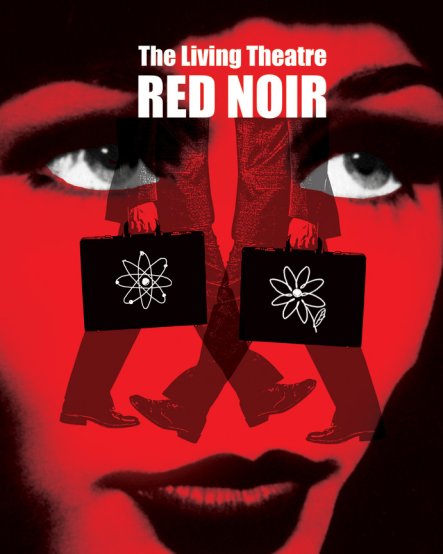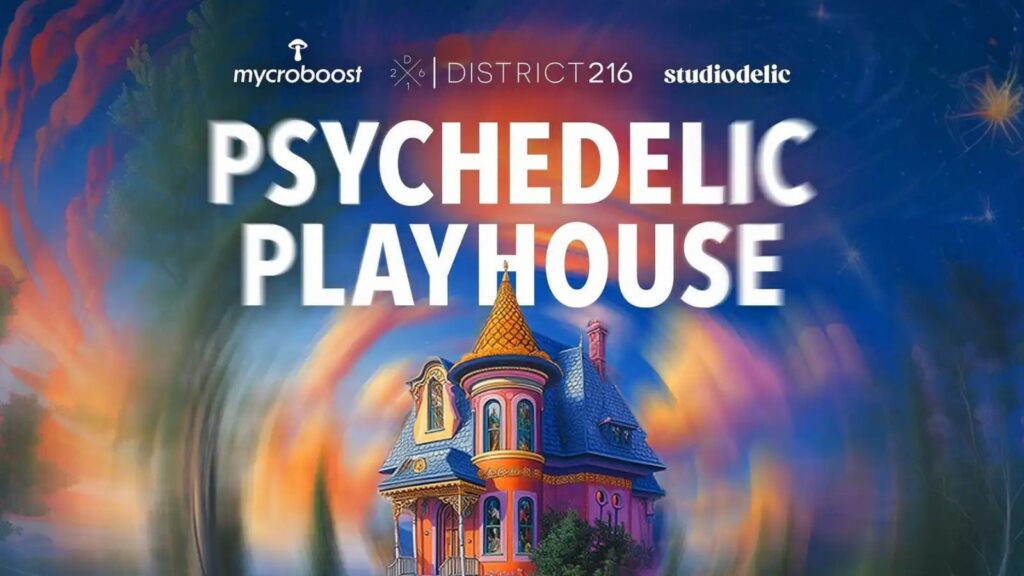Last night, my wife Judy, son Eamonn, and I attended (and, unexpectedly, participated in) an exhilarating and uplifting performance of Anne Waldman's play Red Noir directed by Judith Malina, now in her 63rd year as director of arguably the most influential alternative theater group of the Post-War era. But before I discuss the show in detail, a little background is in order.
Diaspora Dada
I have written elsewhere in these pages of what Allen Ginsberg used to call a "democratization in the arts" that flowered in New York in the 1950s and ‘60s. It came out of the post-world-war shift in global political economy that marked the switch from European imperial dominance to US capital domination, and it came out of the migration of the cutting-edge art scene from Paris, Berlin, and other European capitals to New York, when the avant-garde that flourished between the Russian Revolution/World War One and the fascist and Stalinist regimes that followed fled westward.
It's a tangled lineage-tree that reaches back to the roots of Modernism in French Symbolism, with the rebel poets Baudelaire and Rimbaud (c1840s-‘80s); the Futurist performances in Italy and Russia (c1909-19); German Expressionist theater and dance and Bauhaus performances (c1910-1933); Dada (1916-?); Surrealism (1924-?); and Antonin Artuad's Theater of Cruelty (1930s), to name but a few of the key instances.
Many of the artists were overtly political. The series of revolutions that had periodically rocked Europe between 1789 and 1933 was their base, both materially and ideologically. Revolution was their world, refugee was their designation. Perhaps it is not too reductionistic to simply say that by the end of the Second World War, all of this had landed at Ellis Island in New York Harbor. Once in the US, the artists of what we might call the Dada, Expressionist, Socialist, Anarchist diaspora now generated alternative approaches to the big-business model that drove the culture industry in the US.
Many of the leading figures of the emergent post-war New York avant-garde were either refugees themselves and/or collaborated with and/or were trained by the refugee avant-garde of Europe.
Among the key figures of the new trend in American theater arts was Judith Malina. She was born in Germany, and in 1945 began studying with the German experimental theater pioneer Erwin Piscator at the New School for Social Research in New York. (Among Piscator's other students were Marlon Brando, Tony Curtis, Walter Matthau, Harry Belafonte, Elaine Stritch, and Tennessee Williams.)
In 1947, with painter and poet Julian Beck, she founded The Living Theatre, now the oldest experimental theatre group still working in the US. In the 1950s and ‘60s, their unconventional productions of plays by American writers such as Gertrude Stein, William Carlos Williams, Paul Goodman, Kenneth Rexroth and John Ashbery, as well as European writers rarely produced in America, including Jean Cocteau, Federico Garcia-Lorca, Bertold Brecht and Luigi Pirandello marked the beginning of the Off-Broadway movement.
This revolutionary, explicitly anarchist collective was dogged from the start by the authorities, who closed every one of their New York venues under various pretenses (1953, ‘56, ‘63, ‘93). Beginning in the mid-‘60s, the company toured as a nomadic ensemble, performing in 28 countries in multiple languages. In the 1970's, The Living Theatre began a cycle of plays for non-traditional venues from the prisons of Brazil to the gates of the Pittsburgh steel mills, and from the slums of Palermo to the schools of New York City, offering the plays free of charge to the broadest of all possible audiences. In the 1980's, the group returned to the theater, where they developed performances that enable the audience to participate equally with the actors. In 1999, with funds from the European Union, they renovated the Palazzo Spinola in Rocchetta Ligure, Italy and reopened it as the Centro Living Europa, a residence and working space for the company's European programs.
In 2007, the company opened a new theatre at 21 Clinton Street on Manhattan's Lower East Side, their first permanent home since the closing of their Third Street facility in 1993. It is fitting that this neighborhood, a seat of American radicalism for over a century, and once home to Emma Goldman, is once again home to Judith Malina and the most influential alternative theatre group of our time.
Now in her sixty-third year as director of the group, Judith Malina continues to produce and direct new plays at the cutting edge of the poetics of possibility.
After the performance, Judith told me, "In each play we try to find some step toward the beautiful, nonviolent, anarchist revolution." Red Noir, she says, "deals with a basic human question. It's about the plea to do no harm versus the rotten world of betrayal and hurt. The play is up against the gangster world — in order to oppose it, we have to understand it." Playwright Anne Waldman adds, "It's basically a morality play set against the syndicates of samsara."
Red Noir
Anne Waldman, a poet with more than forty books to her name, has pursued a lifetime commitment to socially-conscious performance poetry and has been a seminal presenter of performance since her co-founding of the Poetry Project at New York's St. Marks in-the-Bowery church in 1966. The play, she says, came out of her decades-long efforts to archive "poetry, performance, cultural/political and environmental activism, collaborative infrastructure, and community arts projects" in order to preserve evidence "that would let any consciousness left in the future know that some 20th/21st century ones were not just slaughtering one another in ‘eternal war' scenarios."
On one level, Red Noir parodies the film noir genre, particularly the 1955 drama Kiss Me Deadly (directed by Robert Aldrich) in which the hard-boiled detective Mike Hammer, after witnessing the brutal murder of a young woman, pursues the case which comes to center on a mysterious valise containing deadly nuclear material (a symbol of the Cold War atomic bomb paranoia of the period). The film ends in a scene of apocalypse as the material explodes.
In Waldman's version, paranoia and brutality do not win the day, but are transmuted by poetic alchemy into a message of hope.
She began writing the play with the image of a grandmother (Beatrice, played in the current production by the excellent Vinnie Burrows) and granddaughter (Lucy, played by Camilla de Araujo) reading Frederick Douglass to one another in their apartment. Beatrice's reading room is the scene of an inter-generational transmission of the memories of an ex-slave who transcended his condition of bondage to become a founding figure in the black liberation movement. Beatrice and Lucy's room is the archive of transcendence, a safe-haven for memory and liberty against the gangster world of corporate/government amnesia and exploitation.
This setting remains present through most of the action, anchoring the play while chaos and conflict erupt all around as the gangster figure (John Kohan) searches for a mysterious valise of botanical specimens stashed in Beatrice and Lucy's archive room by a mercurial scientist (Bolt, played by Eno Edet) desperate to preserve this cache (and by extension all of nature), a struggle complicated by the split alliance of his partner Ruby (the dynamic Sheila Dabney), who is torn between her man and her sister, the jailed activist Crystal (Judi Rymer).
In classical theatrical style, the action is mirrored by a lively chorus of men and women whose commentary, singing, and movement propel the action at a lively clip to its exuberant climax.
Video projections on the side walls of the theater show street scenes (which seem to open the room up to the Lower East Side streets outside), contemporary war footage, and periodically shadow in eerie magnification the monologues of the lead characters.
The themes are environmentalist, pacifist, and anarchist. The message is positive. The poetry is fresh, contemporary, and compelling, with shots of wry humor throughout.
I don't want to spoil it, so I'll stop there.
If you are in the New York area at any time before February 28, do not miss the opportunity to participate in this transformational theatrical experience. Go there, play with the players, and be sure to say hello to Judith. You won't meet a more venerable and magical visionary of the theatre.
"Red Noir is not ahead of the curve; it is the curve…surreal, poetic meditation on manipulation, revenge, revolution, and redemption…a transformative experience…constantly making us (the audience) reevaluate reality…a mantra of non-violent resistance…a compelling utopian ideal…a sensuous chorus…disorienting, yet transcendant joy." –– NYTheatre.com
"…a tribal 1960's be-in…communal rapture…The production's most compelling element is the chorus members…And their youthful hunger for guidance from a formidable visionary like Ms. Malina is palpable. " — New York Times
"The evening is about experiencing a collective–first as audience, then as participant…share a moment of impromptu motion(or emotion) with another person…more than you get from most evenings in the theater." ––Theatermania
"Refreshing and fun…the sea of smiling faces reminded me of dancing in the aisles at two of the more successful musicals currently running on Broadway, each with revolutionary ambitions of its own…"" –Backstage
For tickets and information click here.
Production photos by Kennedy Yanko.















